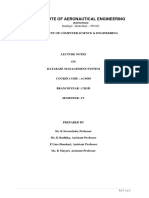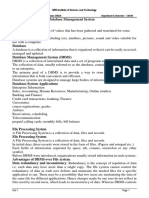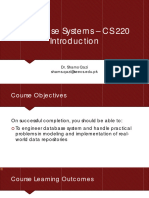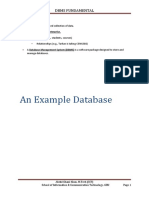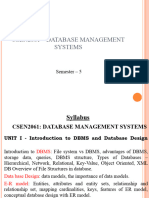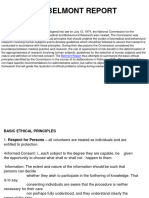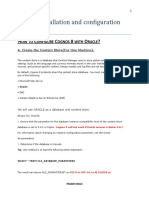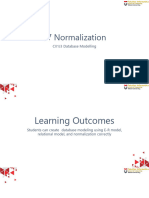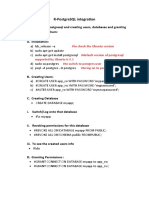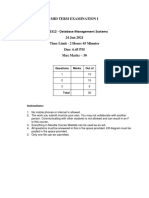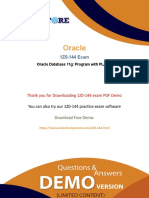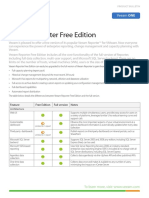0% found this document useful (0 votes)
33 views70 pagesIntroduction 1
The document outlines a course on Database Management Systems (DBMS) at NIT Durgapur, detailing its objectives, content, and various data models. It covers fundamental concepts of DBMS, including data organization, transaction processing, and the differences between structured and unstructured data. Additionally, it discusses the advantages and disadvantages of using DBMS compared to traditional file systems, emphasizing the importance of data independence and the three-schema architecture.
Uploaded by
pradhansnehasis382Copyright
© © All Rights Reserved
We take content rights seriously. If you suspect this is your content, claim it here.
Available Formats
Download as PDF, TXT or read online on Scribd
0% found this document useful (0 votes)
33 views70 pagesIntroduction 1
The document outlines a course on Database Management Systems (DBMS) at NIT Durgapur, detailing its objectives, content, and various data models. It covers fundamental concepts of DBMS, including data organization, transaction processing, and the differences between structured and unstructured data. Additionally, it discusses the advantages and disadvantages of using DBMS compared to traditional file systems, emphasizing the importance of data independence and the three-schema architecture.
Uploaded by
pradhansnehasis382Copyright
© © All Rights Reserved
We take content rights seriously. If you suspect this is your content, claim it here.
Available Formats
Download as PDF, TXT or read online on Scribd
/ 70





